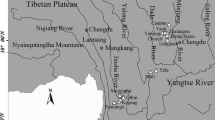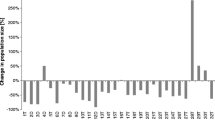Abstract
Various ecological factors (e.g. herbivory, difference between males and females in colonising ability) have been invoked to explain female-biased sex ratios in populations of willow species. It was implicitly assumed that genetic factors would lead to a balanced sex ratio in the absence of ecological disturbances. In an experiment carried out in a homogeneous environment and in the absence of herbivores the progeny sex ratio of 13 crosses of basket willow (Salix viminalis L.) was observed to range from extreme female bias to extreme male bias. The observed sex ratio cannot be explained by the presence of sex chromosomes without assuming that additional loci are also involved in the sex determination. Alternatively, the sex ratios in this study can be explained by a sex determination mechanism governed by multiple independent loci.
Similar content being viewed by others
Author information
Authors and Affiliations
Additional information
Received: 1 February 1996 / Accepted: 14 June 1996
Rights and permissions
About this article
Cite this article
Alström-Rapaport, C., Lascoux, M. & Gullberg, U. Sex determination and sex ratio in the dioecious shrub Salix viminalis L.. Theor Appl Genet 94, 493–497 (1997). https://doi.org/10.1007/s001220050442
Issue Date:
DOI: https://doi.org/10.1007/s001220050442




